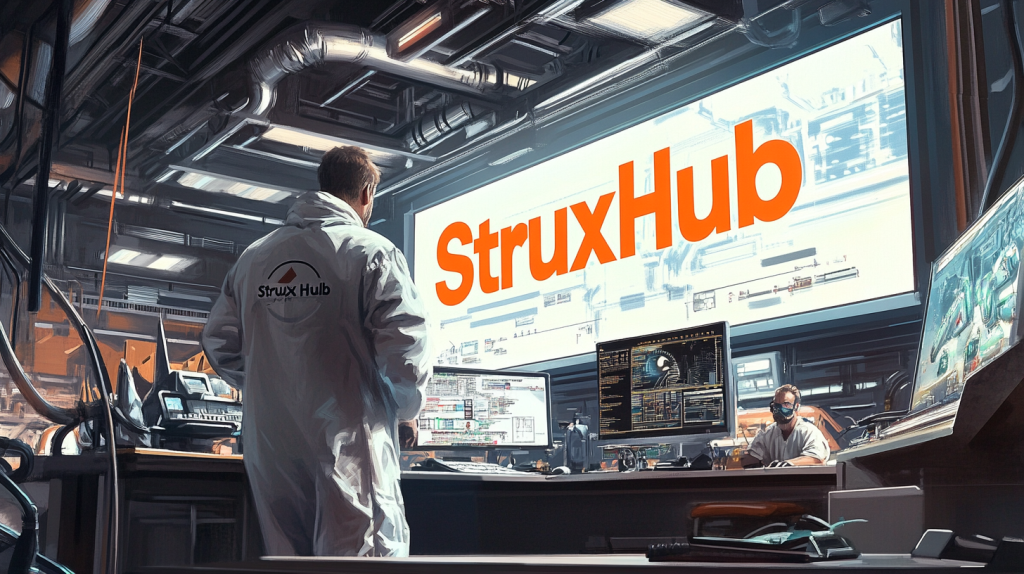How to Choose the Best Construction Scheduling Software for Your Team and Project Size
Table of Contents:

Finding the right construction scheduling software isn’t a one-size-fits-all decision. A small general contracting firm managing two builds per year has very different needs than a nationwide builder juggling dozens of projects simultaneously. The size of your team, the complexity of your jobs, and your internal workflows all play a role in determining what kind of scheduling tool will actually work for you—not just in theory, but on the ground, every day.
With so many platforms available, it’s easy to get caught up in demos, features, and marketing buzzwords. But what truly matters is how the software fits your actual jobsite operations. Will your foremen use it in the field? Can your office staff track changes without extra calls? Does it scale as your business grows—or will you outgrow it in six months?
This guide is built for general contractors, superintendents, project managers, and growing construction teams that want clarity before committing to a platform. We’ll walk through the key questions you should ask, the features that matter most by team size, and how to future-proof your software selection so it evolves with your business.
What Factors Should You Consider When Selecting Scheduling Software?
Before looking at specific products, it’s essential to start with the unique needs of your projects and personnel. Not every construction business operates the same way—so forcing a complex scheduling tool onto a small team, or using an oversimplified calendar for multi-site builds, can create more problems than it solves.
Key factors to evaluate include team size, number of active projects, frequency of change orders, and who will actually be interacting with the software. Will it be used daily by superintendents? Occasionally by executives? Or updated by office staff based on field input? Knowing your users—and how they operate—is just as important as knowing what the tool can do.
A great platform adapts to your workflows, not the other way around. For instance, a smaller team might value simplicity and fast onboarding, while larger companies need complex dependencies, integrations, and multi-project dashboards.
Top Benefits
- Software that fits your team’s daily reality
When tools are tailored to your crew’s size and habits, adoption improves and productivity increases across the board. - Avoids overpaying for features you don’t need
Right-sized software lets you skip costly enterprise features if you don’t use them—freeing up budget for other areas. - Improves alignment between field and office teams
Choosing software based on your operational model helps ensure that field staff, PMs, and executives all stay connected and informed.
Best Practices
- Assess current pain points before shopping
Are your teams struggling with communication, coordination, or accountability? Let real problems guide your feature priorities. - Map out user roles and access needs
Identify who needs to view, edit, and approve schedule updates—and confirm that the software supports role-based permissions. - Test scalability for future growth
If you plan to double your project volume next year, choose a platform that can handle added complexity without needing a full overhaul.
Choosing scheduling software isn’t just about what it does—it’s about how well it fits your company’s size, culture, and goals.
Matching Features to Your Team’s Size and Complexity
Once you understand your internal needs, it’s time to match them to the software’s features and strengths. Different platforms cater to different tiers of construction companies—from solo builders to national GCs. Picking one that aligns with your current operations (and future plans) is the key to lasting value.
Small teams often benefit most from software that’s easy to use, quick to implement, and flexible enough for a range of roles. Features like drag-and-drop timelines, daily task tracking, and simple mobile apps can go a long way. Mid-size firms might need resource management, subcontractor views, and jobsite integrations. Larger organizations need automation, advanced reporting, and enterprise-level support.
Understanding these distinctions helps you avoid underbuying or overbuying. The goal isn’t to get the “best” tool on the market—it’s to get the best tool for how you actually build.
Top Benefits
- Smoother adoption with team-appropriate tools
Teams are more likely to embrace software that feels built for them—not overly complex or frustratingly basic. - Higher ROI from focused feature usage
When you only pay for what you actually use, you maximize value without wasting money on bloated functionality. - Easier vendor support and onboarding
Smaller platforms often offer more direct customer service, while enterprise tools include onboarding teams for large-scale rollouts.
Best Practices
- Create a checklist of must-have features by team size
For example: small teams may need mobile apps and quick edit tools, while large teams need integrations with ERPs or BIM. - Ask for use-case demos from vendors
Don’t settle for generic demos—request walkthroughs that reflect your company size, project type, and team structure. - Verify how pricing scales with users or projects
Some tools charge per user, others per project. Make sure you understand how costs grow as your company expands.
Feature fit isn’t about the fanciest tech—it’s about enabling your team to do their best work without friction or waste.
How Do You Evaluate Software That Works for Field and Office Users?
The best scheduling platform won’t help if only half your team uses it. In construction, the biggest breakdowns happen between those who make the schedule and those who carry it out. That’s why usability—for both field and office teams—is one of the most critical criteria to evaluate when choosing your software.
Project managers, estimators, and admins often use different views, permissions, and dashboards than superintendents or foremen. If the platform feels too technical for the field or too limited for the office, adoption will fail on one side—and your schedule will fall apart.
Great scheduling tools create a shared language between roles. Field-friendly apps with offline access, tap-to-complete tasks, and crew dashboards help supers stay accountable. Meanwhile, office dashboards with drag-and-drop reordering, real-time notifications, and audit trails give project managers confidence in schedule accuracy.
Top Benefits
- Bridges the gap between planning and execution
Software that works equally well for both jobsite and office users ensures your schedule is actionable—not theoretical. - Boosts user adoption across departments
When everyone feels the platform is built for them, they’ll use it more consistently—driving stronger results. - Enables faster decision-making from real-time input
Field updates flow instantly into the system, giving office staff better data to work from when resolving conflicts.
Best Practices
- Test the platform with both field and office users
Run pilot sessions that include supers and PMs to get real feedback on usability from each perspective. - Look for mobile-first design and offline functionality
Jobsite conditions can be unpredictable—make sure your tool works without a Wi-Fi connection or fancy device. - Ensure access control and view customization
Not everyone needs to see everything. Tools that offer role-based views prevent overload and keep users focused.
Construction software only succeeds when it’s used by everyone it’s meant for. Field and office alignment is the foundation for a schedule that sticks.

Related Articles:
Best Guide to Construction Management Software
Superintendents: Effective Training Strategies for Construction Management Software Users
The Best Guide to Delivery Management Systems (DMS) for Commercial Construction
What Are the Common Pitfalls When Choosing Construction Scheduling Software?
Even experienced teams can fall into common traps when selecting scheduling software. From overestimating team readiness to underestimating future needs, the wrong decision can cost thousands in lost productivity and retraining. Identifying these pitfalls early can save your company time, money, and frustration.
One of the most common mistakes is focusing solely on features rather than workflow compatibility. A platform may look great in a demo but fall flat in real-world use. Others choose software that’s either too lightweight to handle growing complexity or too bloated for day-to-day practicality.
Another overlooked issue is neglecting change management. Simply buying new software won’t fix scheduling issues if your team isn’t trained or incentivized to use it. Successful adoption requires buy-in from leadership, clear onboarding plans, and a phased rollout to allow for feedback and adjustment.
Top Benefits
- Avoids wasted spend on underused software
When you sidestep feature overload, you save money and time while boosting team satisfaction. - Improves software adoption success
Skipping common missteps like poor onboarding or unclear training paths can lead to faster team alignment and usage. - Keeps projects on track from the start
Avoiding early implementation hiccups reduces risk of confusion, downtime, and scheduling misfires during critical phases.
Best Practices
- Involve end users early in the decision process
Supers, PMs, and crew leads should all have input—especially if they’ll use the software daily. - Don’t assume a one-time setup is enough
Choose tools with strong customer support, onboarding resources, and regular update training to keep your team sharp. - Pilot new tools on a smaller project
Testing before full deployment allows your team to identify quirks, customize workflows, and avoid project-wide disruption.
Smart software selection is about more than checklists—it’s about knowing where others fail and building your success plan around it.
How Should You Compare Pricing Models and Value?
The price tag of scheduling software is just the starting point. What matters most is the return you get for that spend—measured in time saved, delays avoided, and project outcomes improved. Comparing software solely on subscription costs can be misleading if one platform delivers far more usable value to your team.
Pricing models vary widely. Some platforms charge per user, others by project volume or monthly active usage. Still others offer all-in-one packages with flat-rate pricing. Understanding which model fits your business rhythm is key to keeping costs predictable and scalable.
Also consider the hidden costs: training, onboarding, support, and data migration. A “cheaper” solution may cost you more in lost hours if it takes longer to implement or lacks support. And don’t forget opportunity cost—delays, miscommunication, and rework from poor scheduling can erode profits faster than you think.
Top Benefits
- Aligns spend with actual value delivered
Paying for features your team doesn’t use is wasteful. Matching budget to benefit ensures you get what you pay for. - Prevents surprises as your team or project load grows
Clear, scalable pricing avoids shock increases when you add new users or jobs. - Improves financial planning across departments
Transparent software costs help PMs, finance, and leadership budget with confidence.
Best Practices
- Map out your usage volume before comparing prices
Estimate users, active projects, and expected growth so you can evaluate long-term costs—not just first-year rates. - Ask for a breakdown of onboarding and training fees
Some vendors include these, while others charge separately. Get clarity up front. - Weigh potential ROI—not just cost
Consider the value of reduced delays, improved coordination, and fewer change orders when calculating real return.
Choosing the right pricing model isn’t just about what you spend—it’s about what that investment enables across your entire project pipeline.
Should You Prioritize Integration with Existing Systems?
Your construction scheduling software doesn’t operate in a vacuum. It lives within a broader ecosystem of tools your team already uses—like project management platforms, accounting software, time tracking apps, and document management systems. Choosing a solution that integrates with your current stack can make or break your overall efficiency.
When systems talk to each other, updates flow naturally between departments. Schedules connect to task lists, punch items link to deadlines, and delays trigger automatic notifications. Without integration, teams are stuck duplicating work, sending update emails, or hunting down attachments from different platforms.
Whether you’re using Procore, Buildertrend, Sage, QuickBooks, or a custom system, look for scheduling tools with flexible API access or native integrations. The fewer barriers between tools, the faster your team works—and the fewer mistakes they make.
Top Benefits
- Reduces double entry and manual data syncing
Integration eliminates repetitive tasks and improves data accuracy across systems. - Increases visibility for all stakeholders
When scheduling connects to financials, documents, and crew updates, decision-making becomes faster and more informed. - Enhances long-term scalability
Integrated systems grow together, allowing you to adapt as your tech stack evolves without major overhauls.
Best Practices
- Create a list of must-integrate platforms
Identify the systems your team uses most—then find scheduling tools that connect to them easily. - Ask vendors for live integration demos
Don’t rely on promises. See the connection in action so you understand what’s truly automated. - Check for API flexibility or support for Zapier-type tools
If native integrations are missing, platforms with open APIs can still connect with other tools through custom setups.
A smart integration strategy ensures that your scheduling software isn’t just helpful—it becomes an engine for coordination across your entire business.
How StruxHub Supports Smarter Scheduling Workflows
StruxHub is designed to solve one of the most overlooked scheduling challenges: making sure the entire team actually follows the plan. While it doesn’t replace your scheduling software, it empowers your team to execute your schedules more accurately and efficiently by centralizing communications, documentation, and task tracking—all in one intuitive platform.
Whether you’re running a large GC firm or managing multiple crews on residential builds, StruxHub acts as the connective tissue between your office plan and field execution. It’s where supers get daily updates, teams log task progress, and subcontractors stay aligned with the overall schedule—without having to juggle emails, whiteboards, or multiple apps.
By streamlining how your team shares information, tracks jobsite issues, and documents work, StruxHub helps you stick to your schedule—not just plan it.
Top Benefits
- Centralized field documentation and communication
From updated drawings to punch lists, everything lives in one place—accessible from the field or the office. - Real-time visibility into jobsite progress
Teams can track task status, flag issues, and share updates without needing extra calls or emails. - Stronger accountability and less rework
When everyone has clear visibility and context, schedules run smoother and fewer mistakes slip through.
Best Practices
- Link schedule-critical tasks inside StruxHub workflows
Make sure major milestones are tagged and visible to keep field teams aligned with top priorities. - Encourage foremen and PMs to post daily task updates
When updates happen in real time, office teams can adjust scheduling quickly. - Use tags, comments, and attachments to provide task clarity
Clear documentation reduces guesswork and keeps progress aligned with your original plan.
With StruxHub, your scheduling process becomes more than a plan—it becomes a living, breathing system your whole team can execute confidently.

StruxHub
Experience the power of StruxHub today and witness firsthand how it can revolutionize your construction operations.
FAQ
How do I know which scheduling software is right for my construction company?
Start by identifying your team size, the number of active projects you manage, and how complex your workflows are. Small teams may benefit from lightweight, mobile-friendly platforms with quick onboarding, while larger firms might need advanced features like resource leveling, multi-project dashboards, or ERP integration. Also, involve your field users—if the software doesn’t work for your supers, it won’t be used consistently. Match the tool to how your business actually operates day-to-day, not just to its list of features.
Beyond core features and user-friendliness, consider the software vendor’s reputation for customer support and ongoing development. A responsive support team can be invaluable when troubleshooting issues or implementing new features. Furthermore, a vendor that actively invests in product development ensures the software remains current with industry best practices and technological advancements, protecting your long-term investment.
What’s the best scheduling tool for small construction teams?
Small construction teams usually benefit from software that’s easy to learn, affordable, and flexible. Look for drag-and-drop timelines, mobile apps, daily task views, and simple project tracking. Tools like Buildertrend, CoConstruct, or Fieldwire can be strong fits. Make sure the platform allows for fast updates from the field, and doesn’t require full-time admins to manage it. Affordability, ease of use, and field readiness should be your top criteria.Small construction teams should prioritize scheduling software with intuitive interfaces, mobile apps, and simple tracking. Ultimately, the best tool will be affordable, easy to use, and field-ready, enabling efficient project management and improved collaboration.
How does scheduling software help with subcontractor coordination?
Construction scheduling tools improve subcontractor coordination by providing a shared, real-time view of the project plan. Subcontractors can log in to see when they’re expected on-site, view related tasks, and receive automatic updates if delays occur. This reduces phone calls and misunderstandings, helps prevent overlaps or gaps between trades, and keeps everyone aligned to the same timeline. Many platforms also offer limited-access views or permission levels tailored specifically for subs.
Can scheduling software work with my existing project management tools?
Yes—many modern scheduling platforms are designed to integrate with project management systems like Procore, PlanGrid, Sage, or QuickBooks. Some offer native integrations, while others allow for API connections or third-party syncs like Zapier. Integration helps eliminate double entry, reduces data errors, and streamlines reporting. When choosing a scheduling tool, ask for a demo of how it interacts with your current systems and confirm any potential extra costs for integrations.
How does StruxHub support my existing scheduling tools?
StruxHub enhances your scheduling tools by improving the communication, visibility, and accountability needed to execute schedules in the field. It’s not a scheduling platform itself—it’s a workflow coordination tool that ensures your crews, superintendents, and subcontractors stay aligned with your plan. With task tracking, documentation sharing, and real-time updates from the field, StruxHub becomes the operational bridge between your digital schedule and what’s actually happening on-site. That alignment reduces delays, minimizes confusion, and helps your team deliver projects on time.




